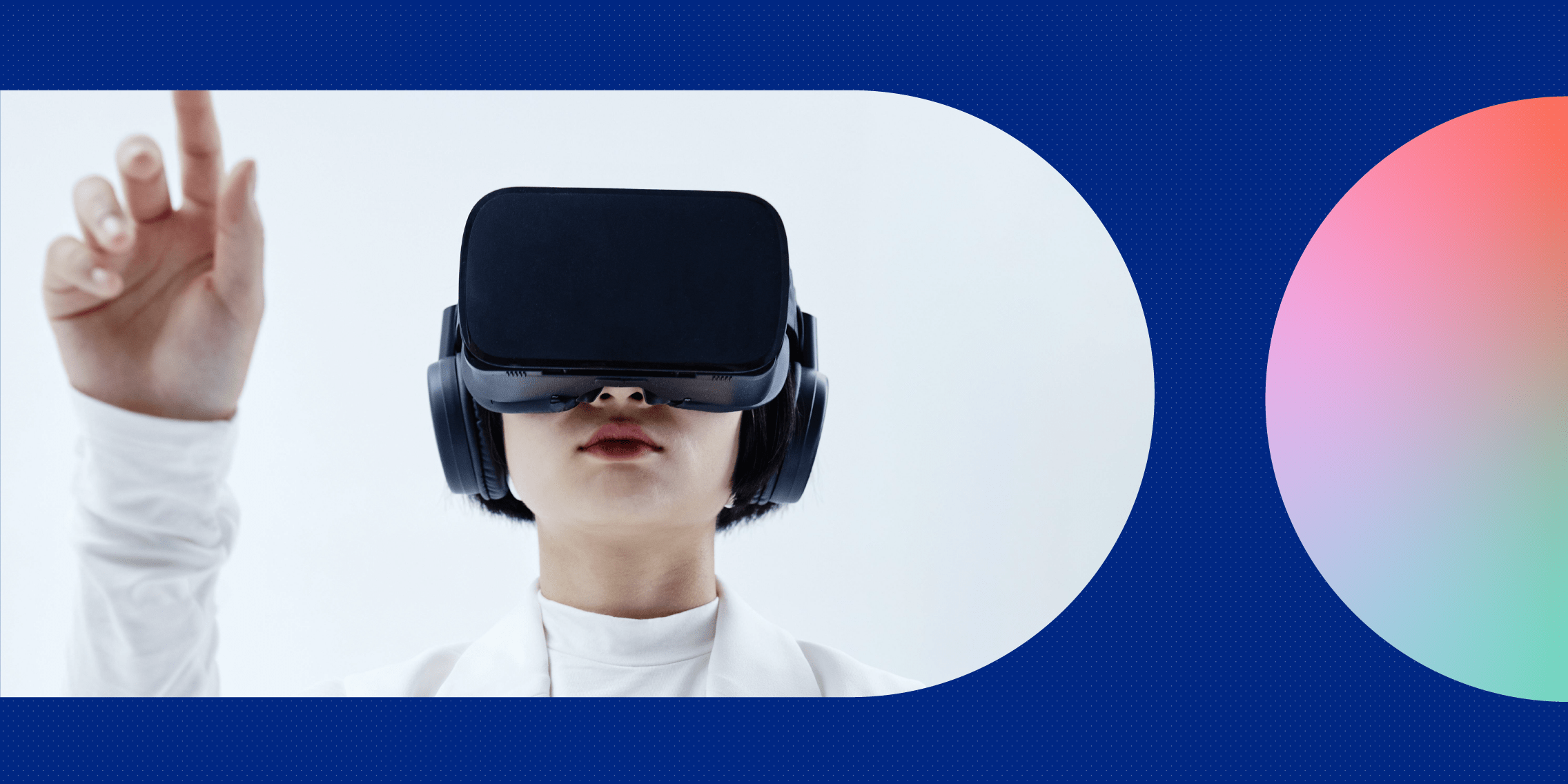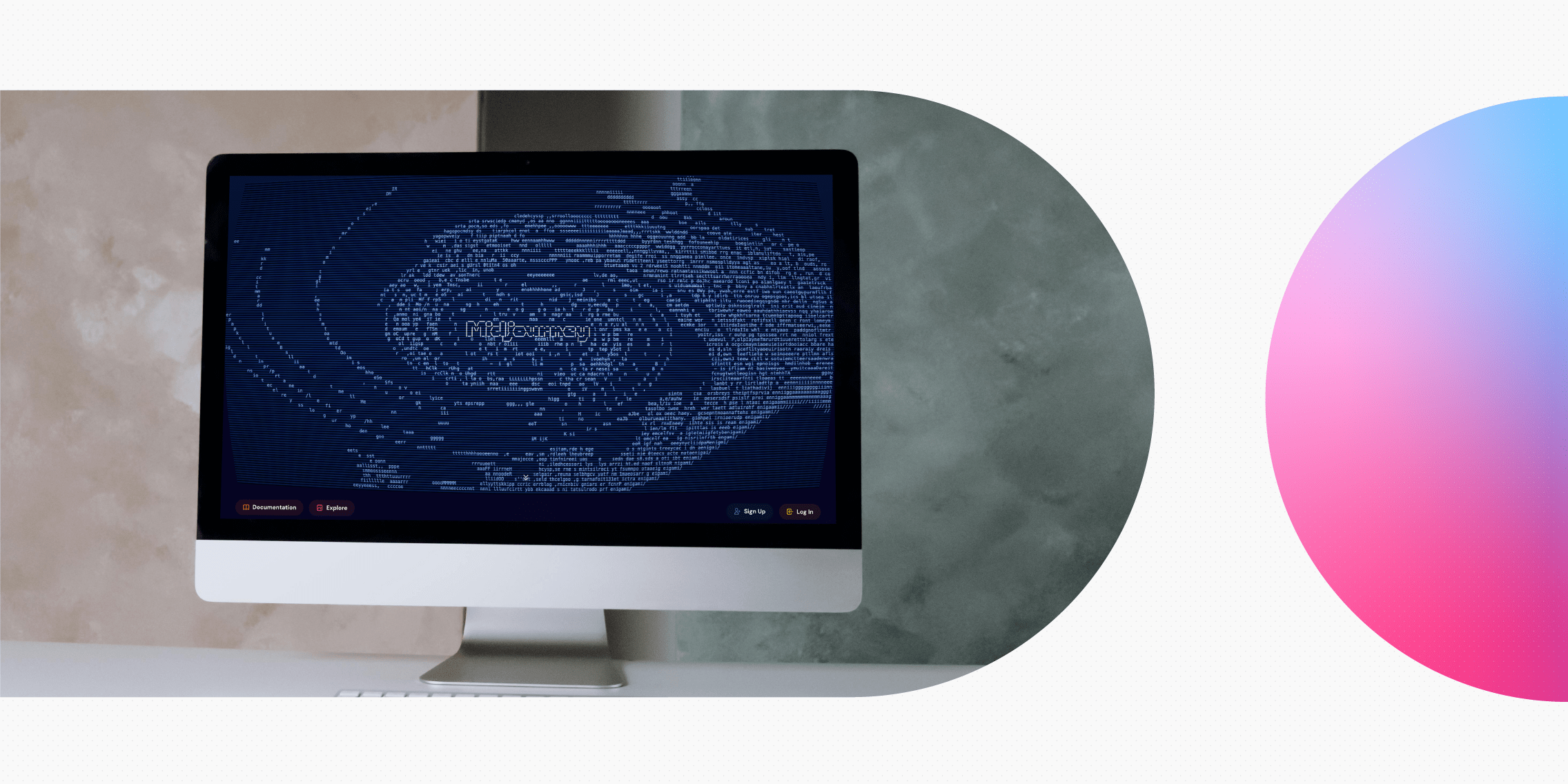Since the initial rise of AI, designers have found themselves navigating new challenges and opportunities, such as “How do we leverage AI to make us more efficient?” and “How can we incorporate AI into our existing products to provide a better user experience?”
With AI-first products, however, designers must instead ask themselves: “How can we leverage AI to solve our users’ most pressing problems?”
And, from there: “How do we build a product founded entirely on AI? How do we design for a rapidly advancing technology and make it usable and user-friendly for humans? And how do we address the ethical concerns inherent in this technology?”
Still in its infancy, this burgeoning field currently poses many more questions than answers. Let’s unpack what we know so far about AI-first product design—and what it means for designers.
What is an AI-first product? (With examples)
AI-first products are built entirely on and around artificial intelligence. Rather than adding AI-powered features to an existing app or software, the entire product concept is rooted in AI.
With AI-first design, artificial intelligence is absolutely integral to the product’s purpose and functionality. If you removed the AI from an AI-first product, it simply wouldn’t work or provide any value.
Consider a product like ChatGPT or Midjourney. Without AI, ChatGPT or Midjourney wouldn’t be able to serve its core purpose of understanding your questions or prompts and generating a response.
Another example of an AI-first product is Amazon Alexa—the virtual assistant behind smart devices such as the Amazon Echo speaker.
Alexa uses Natural Language Processing (NLP) and machine learning to understand verbal instructions, generate spoken responses, and continuously learn the user’s preferences over time.
If you took that AI technology away, Alexa would cease to exist—and that’s the very definition of an AI-first product.
At present, there aren’t many truly AI-first products on the market. But, as AI becomes increasingly widespread, we can expect a gradual shift from “AI-enhanced products” to “AI-first products”, where AI is the starting point for new concepts and solutions.
So what will that process look like? How will AI-first product design differ from product design as we know it? Let’s explore.
AI-first product design vs. traditional product design: What’s the difference?
At this point, it’s important to emphasise that AI-first product design is still very much in its infancy. There are no hard-and-fast guidelines, processes, or principles in place, and there’s still much to be figured out and discovered.
As such, it’s impossible to speak definitively about how AI-first product design will differ from what we’ll call traditional product design. But, based on what we know so far, there are already some clear and notable distinctions to be made—which we’ll delve into now.
AI-first product design asks different questions
With AI-first product design, it’s not a question of “How can we improve our existing product with AI?” or “How can we design a product that effectively incorporates AI?”
Rather, it’s a question of “How can AI solve this specific problem that our user group has?” and “How do we present that solution in the form of an accurate, effective, and user-friendly product?”
The entire problem space, and subsequent ideation, concept development, and product design, is considered through the lens of AI. AI is the solution itself, not simply an add-on—and that reframes how designers approach the entire process.
AI-first product design is even more collaborative and cross-functional
Traditional product design is highly cross-functional, requiring close collaboration between UX researchers, UX designers, UI designers, developers, and business stakeholders.
AI-first product design will take that up a notch, requiring input from an even broader range of experts—including data scientists, AI-specialised researchers, and, in an ideal world, dedicated ethicists who are equipped to tackle critical challenges such as bias, privacy concerns, and potential risks to the user.
AI-first product design is data-dependent, not just data-driven
Data is a crucial component of the design process. The best products are informed by qualitative and quantitative data gathered through extensive user research and continuous product testing.
If traditional product design is data-driven, AI-first product design is data-dependent. AI-first products must continuously learn and adapt to provide a great user experience, and that requires ongoing data collection and analysis.
In the realm of AI-first, data is not just a best-practice approach; it’s integral to both the design process and the AI-first product itself.
AI-first product design grapples with more complex user journeys
When designing apps and websites, you’re typically creating a static solution; a product or interface that won’t change or vary too much from one user to the next. As such, you can usually map out fairly neat, straightforward user journeys.
With AI-first products, on the other hand, you’re designing solutions that can adapt to each individual user and interaction in real-time—creating a much more dynamic and personalised experience.
As a result, the user journey is not so easily contained or defined. In theory, there are myriad pathways and possibilities for how the user journey might take shape—and it could be completely different for each unique user.
Product designers will need to rethink their approach to user journey mapping, striving not for a finite set of clearly-defined pathways, but rather, embracing flexibility, adaptability, and the unknown.
Speaking of the unknown…the differences we’ve outlined here between traditional and AI-first product design are really just the tip of the iceberg. There are still many, many question marks hanging over this emerging discipline—and many more differences, and indeed similarities, that will come to the fore as the field evolves and matures.
The challenges of designing for AI-first products
AI-first product design holds huge potential for designers and end users alike—but getting it right will be a major challenge, with plenty of trial-and-error along the way.
Some of the biggest challenges associated with designing AI-first products include:
- User trust: How can we overcome user concerns around privacy, control, data protection, and ethics? How do we create AI-first products that feel safe and comfortable for the everyday user?
- Ethical considerations: We know that AI is inherently biased, so how can we detect and mitigate such biases early on? How do we actively avoid creating products that are harmful and discriminatory?
- Scalability: AI-first products are designed to learn and improve over time as they gather more and more data. As the product grows and evolves in complexity, how do we maintain optimal performance and usability?
Perhaps the greatest challenge of all is just how new the field is. AI-first product design doesn’t yet have the tried-and-true processes, principles, and protocols that traditional product design has.
When creating AI-first products, you must simultaneously navigate uncharted technical territory, prioritise end-user needs and usability, and ensure that you’re designing with ethics, inclusivity, and accessibility in mind.
That’s no mean feat—especially in the absence of clear guidelines and norms.
So how can you tackle the task of AI-first product design? Here are some principles and best practices to keep in mind.
How to design for AI-first products: Guiding principles and best practices
1. Focus on human-centric problem-solving
For all the differences between traditional and AI-first product design, there’s one core tenet that remains unchanged. It doesn’t matter if you’re designing a mobile app, a website, or a groundbreaking AI product: you must focus on solving real, human problems and delivering genuine end-user value.
Don’t fall into the trap of design for design’s sake. Start as you would with any other product: understand your target audience, define the problem they need you to solve, and then figure out how AI can provide the solution.
2. Keep the user in control
One of the reasons AI is so appealing is that it has the potential to relieve us of monotonous, cumbersome, or overly time-consuming tasks—improving our quality of life and freeing us up for more enjoyable activities.
At the same time, this can make AI seem rather scary. Not only will users be sceptical about just how much they can trust your AI-first product; they’ll also be hesitant to adopt a product that leaves them feeling redundant or out of control.
A key aspect of designing a positive AI-first user experience is to find the sweet spot between human and machine.
Don’t go in with the goal of creating an AI-first product that can do absolutely everything. Even if that’s technologically possible, it won’t feel good for the user.
Instead, strive for a balance between efficiency and user comfort. Select just one or two key tasks that your AI-first product will remove from the user’s plate while giving the user firm control over when and how those tasks are carried out.
3. Build trust through transparency
If you want people to comfortably adopt and engage with your AI-first product, you need to earn their trust—and that’s best won through transparency.
First and foremost, allow the user to understand the AI behind your product, if they’re interested. Provide clear, plain-language, easily findable and accessible explanations of how the AI works, what technology and data it uses, and how it makes decisions.
You might include clickable UI elements within the product interface, for example, that encourage the user to explore and learn more about how the AI works at specific moments within the user journey.
At the same time, be very clear about what data you’re collecting, how it’s being used, and what measures you’ve got in place to protect and safeguard that data.
4. Consider the ethical implications of every design decision
Designers have a great responsibility to create products that are inclusive, accessible, and safe for all—and must be especially diligent when designing AI-first products.
It’s well-documented that AI models inherit human biases from the data on which they’re trained. This means that, whenever AI is at play, there’s a risk that it will perpetuate harmful stereotypes or make biased assumptions and judgements based on what it’s learned from humans.
If you’re venturing into the realm of AI-first product design (or even adding AI to an existing product), you must approach with a great deal of awareness and caution around the potential risks.
But, more than that, you must take proactive measures to test for, recognise, and address such issues before your product is released into the public domain. This should be factored in right from the point of data collection and AI model training, through to every design decision you make along the way.
5. Get (even more) comfortable with cross-functional collaboration
We mentioned earlier how AI-first product design will require extensive cross-functional collaboration, involving not only researchers, designers, and engineers, but also data scientists and other domain-specific experts.
If you want to successfully navigate the field of AI-first design, you’ll need to get (even more) comfortable collaborating with professionals across a variety of disciplines.
You don’t need to become a data science expert. But, just as learning the fundamentals of programming can facilitate collaboration between UX designers and developers, it can be useful to familiarise yourself with how data scientists and AI experts work, as well as with core concepts related to AI, machine learning, data collection, preprocessing, and analysis.
If you’re leading a product or design team, you’ll also want to make sure that you’re well set-up with clear communication channels and processes, as well as tools to facilitate collaboration, project management, and documentation.
Ultimately, the better prepared you are for cross-functional collaboration, the easier it will be to establish an AI-first product design process within your organisation.
Looking to the future: What can we expect from AI in UX?
We’re confident that AI won’t replace human UX designers, but it’s undeniably transforming how designers work and the kinds of products they work on.
As AI technology advances and adoption increases, we expect to see more and more products enhanced and equipped with AI capabilities, as well as continued integration of AI tools for UX within the design workflow.
At the same time, we can anticipate a slow but steady rise in AI-first products, calling for greater collaboration between designers and data scientists, the careful navigation of unfamiliar challenges and ethical concerns, and a reframing of the product design process as we know it.
Key takeaways
With AI-first product design, the focus shifts from “How can we make our existing products better with AI?” to “How can we design entirely AI-centric products that serve a genuine user need?”
Just like traditional product design, AI-first UX will still prioritise human-centric problem solving. However, we expect AI-first design to be:
- Even more collaborative and cross-functional, spanning multiple disciplines and requiring an even greater breadth of expertise
- Data-dependent (not just data-driven)
- More complex with regards to the user journey, given the dynamic and adaptive nature of AI-first products
Some of the biggest challenges of AI-first product design lie in gaining end-user trust, mitigating bias and overcoming ethical concerns, and scalability. With the field still in its infancy, addressing these challenges (and the many more that will undoubtedly arise) will require agility, experimentation, and continuous learning.
More industry insights
AI-first product design is just one of many exciting (and challenging) shifts taking place in the industry. If you’d like to learn more about how the field is evolving—and what it’s like to be a designer right now—check out the following:
- The top UX design trends in 2024 (and what they mean for designers)
- AI and UX: A reality check with Jakob Nielsen
- Is the UX job market over-saturated? An in-depth analysis and outlook for 2024
Want to level up your design skills and keep pace with this fast-moving industry? Consider the UX Design Institute’s professional Product Design Programme.
Taught online at a flexible pace, and with live support and mentoring, the course covers the end-to-end product design process, spanning both UX and UI design to give you a well-rounded, industry-relevant product design skill set. The curriculum also includes a module on AI, ensuring you’re equipped to navigate the design industry as it changes and evolves.




